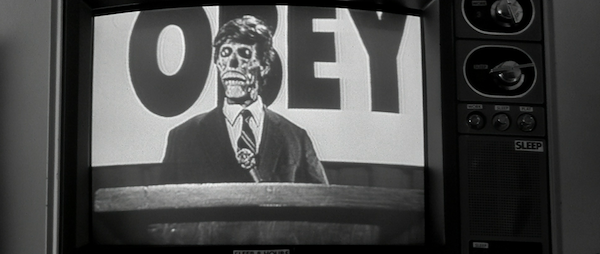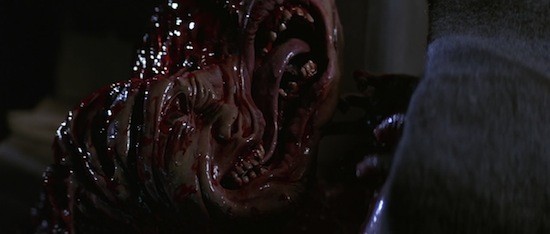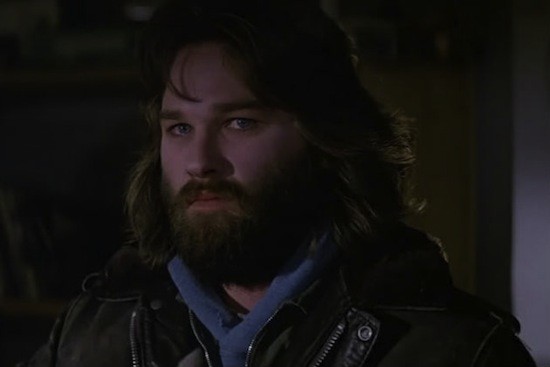The Time Warp Drive-In is back tonight with a salute to The Paranoid Visions of John Carpenter.

They Live
During the heyday of his career in the 1970s and 80s, Carpenter was known mostly as a schlock horror director. He broke into the mainstream in 1978 with Halloween, a $300,000 quickie that made $70 million, launched Jamie Lee Curtis’ career and set the template for the slasher movie genre that would dominate 80s horror. Without Halloween, the entire horror genre would be unrecognizable today: There would be no Friday the 13th, A Nightmare On Elm Street, or Scream.
Time Warp Drive-In: The Paranoid Visions of John Carpenter (2)
The all-night marathon of Carpenter’s work includes the film that many consider his masterpiece, The Thing. The 1982 film starring Kurt Russell that had the misfortune of being released the same weekend as E.T.: The Extra-Terrestrial, and was buried at the box office. But it has inspired generations of horror filmmakers, who have tirelessly imitated its beats, but always failed to achieve the same intensity of tension. Also on offer is Carptenter’s rarely seen homage to H.P. Lovecraft, In The Mouth of Madness, and the criminally underrated 1987 work Prince of Darkness. Viewed today, Prince of Darkness is a wildly uneven film, but the most scared I have ever been in a movie theater was when I first saw it at age 16. Also, it has Alice Cooper in it.

Prince of Darkness
Carpenter was the poster child for what Martin Scoresese called “the director as smuggler”. His work was always much more complex than it appeared on the surface. There was a strong come-on—Jeff Bridges as a romantic E.T. In 1984’s Starman, for example—but the real meat was in the details. Starman was a huge commercial hit, but it was also a textbook Man From Mars story, where the visitor from elsewhere, unfamiliar with our ways, becomes a conduit for us to question the unexamined assumptions of our culture.
The Time Warp leads with They Live. Released in 1988, the film was the last gasp of Carptener’s golden decade. Even though it made $13 million on a $3 million budget, it was long considered an embarrassing oddity. But today, it is clear that They Live is one of the most insightful pieces of social science fiction ever produced. It is at once a promulgator of conspiratorial thinking and a critique of it. It’s Richard Hofstadter’s essay “The Paranoid Style In American Politics” rendered as a trashy vehicle for wrester Rowdy Roddy Piper. It’s a primer on propaganda, and how our postwar belief that we don’t do propaganda in America makes us particularly vulnerable to a skillful propagandist such as Fox News’ Roger Ailes. You want to see through Donald Trump’s smokescreen of lies? Put on the sunglasses (a literal framing device) and see the alien masquerading as humans. But be aware: Trump’s followers also believe they are wearing the sunglasses, and only they know the real truth. Is Nada, Piper’s everyman character, actually a dangerous paranoid schizophrenic? He sees things that others can’t, and commits a mass shooting in a bank in response to images only he can see. The film keeps us guessing right up until the end, but the urge to question reality, and dark places those questions can lead, linger long after the final sex joke.
Time Warp Drive-In: The Paranoid Visions of John Carpenter


